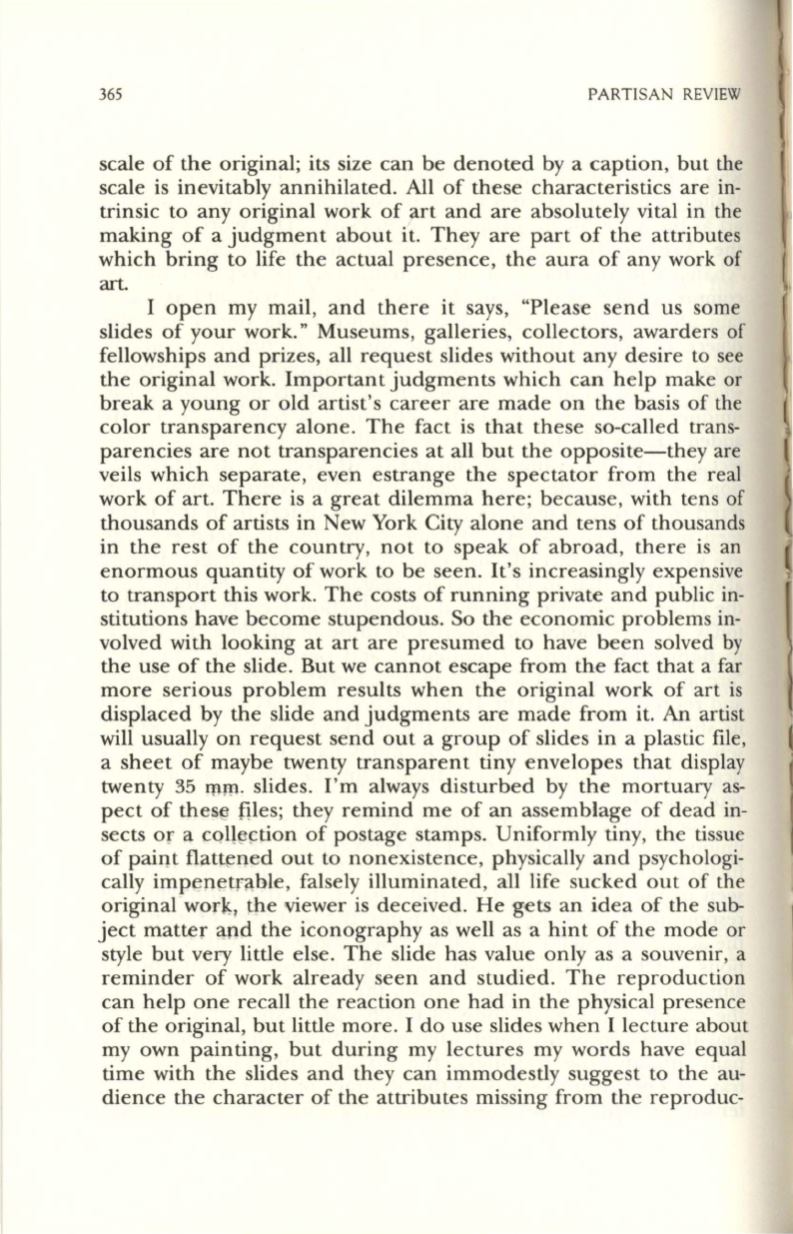
365
PARTISAN REVIEW
scale of the original; its size can be denoted by a caption, but the
scale is inevitably annihilated. All of these characteristics are in–
trinsic to any original work of art and are absolutely vital in the
making of a judgment about it. They are part of the attributes
which bring to life the actual presence, the aura of any work of
art.
I open my mail, and there it says, "Please send us some
slides of your work." Museums, galleries, collectors, awarders of
fellowships and prizes, all request slides without any desire to see
the original work. Important judgments which can help make or
break a young or old artist's career are made on the basis of the
color transparency alone. The fact is that these so-called trans–
parencies are not transparencies at all but the opposite-they are
veils which separate, even estrange the spectator from the real
work of art. There is a great dilemma here; because, with tens of
thousands of artists in New York City alone and tens of thousands
in the rest of the country, not to speak of abroad, there is an
enormous quantity of work to be seen. It's increasingly expensive
to transport this work. The costs of running private and public in–
stitutions have become stupendous. So the economic problems in–
volved with looking at art are presumed to have been solved by
the use of the slide. But we cannot escape from the fact that a far
more serious problem results when the original work of art is
displaced by the slide and judgments are made from it.
An
artist
will usually on request send out a group of slides in a plastic file,
a sheet of maybe twenty transparent tiny envelopes that display
twenty 35
Iflm.
slides. I'm always disturbed by the mortuary as–
pect of
thes~
files; they remind me of an assemblage of dead in–
sects or a
coll~~tion
of postage stamps. Uniformly tiny, the tissue
of paiqt
flatt~ned
out to nonexistence, physically and psychologi–
cally
impen~trable ,
falsely illuminated, all life sucked out of the
original work, the viewer is deceived. He gets an idea of the sub–
ject matter <!Jld the iconography as well as a hint of the mode or
style but very little else . The slide has value only as a souvenir, a
reminder of work already seen and studied. The reproduction
can help one recall the reaction one had in the physical presence
of the original, but little more. I do use slides when I lecture about
my own painting, but during my lectures my words have equal
time with the slides and they can immodestly suggest to the au–
dience the character of the attributes missing from the reproduc-


